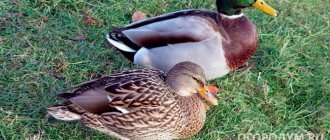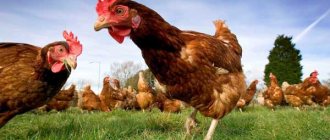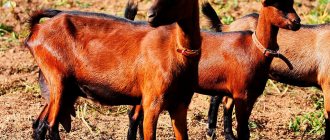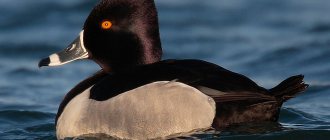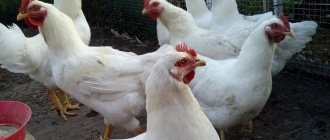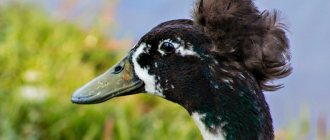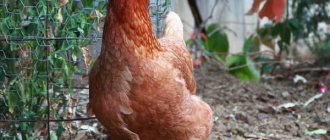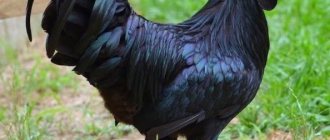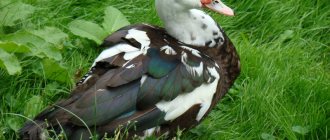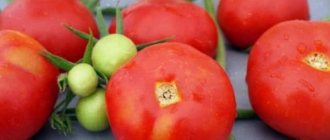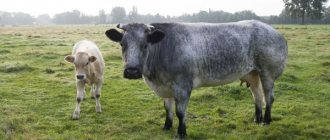Home » Articles about ducks » Runner duck breed
The Runner duck breed is considered one of the oldest, although it became known in Europe not so long ago. The birds have an unusual exterior and attract farmers with their high level of egg production, excellent taste of meat and unpretentious maintenance.
Origin
The birds got their name because of their ability to run quickly - unlike other breeds, runners do not waddle when moving from side to side. Runner ducks are excellent swimmers. The history of breeding goes back about 2000 years, ducks come from Asia.
The ancestor is considered to be the penguin duck. Initially, birds were brought from Asia to Germany and England. There, their characteristics were improved through systematic selection work. Later, the improved Asian breed spread throughout the world.
In Russia, the Indian Runner duck breed was initially raised in limited quantities - its representatives could be seen in zoos and at exhibitions. Now it is in demand among farmers not only because of its unusual appearance - its egg productivity is highly valued.
Advantages and disadvantages
The Indian runner has the following advantages:
- high egg production;
- good body resistance to diseases;
- ducklings grow quickly;
- belong to the grazing species (does not require a lot of feed);
- the taste of the meat is high, the fat content does not exceed 32%;
- the meat is dietary and does not have the specific odor inherent in other types of ducks;
- high demand for hatching eggs and young ducks.
The main disadvantages of this breed:
- difficult to find breeding ducks;
- low carcass weight;
- ducks are very shy and can make noise and fly away at the slightest sign of danger.
Description of the breed
The runner duck has a vertical body position - in this way it is more similar to penguins than to its other brothers. The body is erect, slender, with a moderately rounded chest. Visually, the body resembles a bottle with a narrow, long neck. Starting from the shoulders, the body expands slightly downward.
The wings are pressed to the body, slightly shifted towards the abdomen. The tail is short. Legs are slender, of medium length. The neck is long, the beak is large. The plumage is dense and smooth. The shades are varied - ducks can be white, black, blue, red, brown and other colors. Females differ from drakes in the size and shape of their tail (in males it takes on a curved shape already at 3 months). Ducks usually have lighter feet and beaks.
The birds have a calm character, they do not show aggression, and are somewhat timid. Runners don't make much noise - they only worry if there is a threat. Females can be distinguished from males by their voice - ducks quack, and drakes make wheezing sounds.
Runners are successfully used in breeding for breeding productive crosses.
Differences in color
Indian Runner ducks are divided into species, which are classified according to the color of their feathers. These birds are taken to exhibitions. Individuals should not be too tall or short, have a plump belly, a short neck, and a long tail.
Based on the color of ducks, the following varieties are distinguished:
- Wild. Drakes are characterized by a black head and an emerald neck, which is girded at the base of the back with a white torn ring. The lower and upper areas of the chest are the color of chocolate. The remaining parts - the abdomen, the upper part of the legs and the tail - are pearl with a mother-of-pearl tint. The lower back and tail are anthracite with a greenish tint. The ashen wings are decorated with a dark blue mirror ringed with black and white stripes. The wings are beige on the inside. The beak is emerald green with a black spot, the legs are bright orange. Females are less bright, their overall color is yellow-brown, and their feathers have a dark horseshoe-shaped marking. The beak is light brown, with a darker color at the tip.
- Silvery wild. The drakes are pearly-cream, the head is black with a green tint. The feathers on the back of the head, lower neck, chest and at the base of the wings are terracotta. The tail is dark chocolate color. The tail is light yellow, the wings are white with a silver tint. The mirror on the wings is edged with a white stripe, bright green. All feathers are edged with a light silver border. The beak is greenish-gray and the legs are orange. Females are milky in color. The top of the breast, base of the neck, back of the head, back and tail are speckled. The lower back is light yellow with grey, speckled. The feathers are edged with a snow-white border. The lower chest area and abdomen are cream. And the mirror on the wings is mother-of-pearl blue.
- Trout. The neck and head of males are emerald green, framed by a non-integral ring at the base of the neck. The breast is brown with small black dots. The wings are gray with a pearlescent tint and a blue-green mirror. The back is darkish with a light gray stripe in front of the rump. The beak is green with a dark tip. Females are brown-pearlescent, with oblong speckles on the back and abdomen. Wing feathers with dark brown edging. The beak is orange with dark speckles.
In monochromatic runners, ducks and drakes have no differences in color.
- white - the legs are bright orange, the beak is deep yellow;
- black – anthracite-colored paws, black-green beak;
- brown - the feather color can have shades from medium brown to dark chocolate, the feathers on the neck, mirror and tail are darker, the beak is grayish-brown, the legs are coffee-colored;
- blue - bright blue color, there may be specks of black, beak - dark gray or light olive with a characteristic dark spot at the end, paws - dark gray or gray-brown.
In addition to these colors, there are pea, yellow-blue varieties of Indian runners and representatives of khaki colors.
Productivity
The description of the duck breed indicates that the runner has an egg production direction. Females lay from 280 to 350 eggs per year. Such indicators are typical for the first year; subsequently they decrease.
The average weight of eggs is 80 g. They differ from chicken eggs in taste and composition - duck eggs contain less fat, they are well digestible, have high nutritional value, and are stored for a long time. The shell is predominantly white, but can take on an unusual color - it can be greenish or blue.
The characteristics of egg production depend on the color - ducks with white plumage lay better in the cold season, and ducks with black plumage lay better in the summer. Puberty occurs at 5-6 months. Females make good brood hens.
Meat productivity in birds is modest - adult females weigh about 2 kg, males are slightly larger. It is interesting that by the age of 2 months the chicks almost catch up in size with the adults. The meat of runners is dietary, tasty, tender, and the amount of cholesterol is minimal.
Types of Indian Runners
This breed of ducks has several varieties that differ in plumage color. Mostly brown feathers are found, the most rare are ash-red ones. This type is for exhibition. In general, the main features of beauty are considered to be a plump tummy, a small neck and a long tail. The colors of birds are incredibly diverse.
Silver Indian Runners
There are several types of duck colors:
- Wild. The head and neck are emerald, the breast is brick red with a white ring on the neck. The tail is black with greenish speckles, the beak is pure green. The wings are chocolate, the beak is yellow.
- Trout. The duck looks like this: the breast is red, the back is dark, the wings are gray, the neck is green with a white ring, the feathers are brownish, the beak is bright yellow.
- Silvery wild. The head has a bright black color, shimmering with emerald. The breast is brown-red, rich, the belly is silver, the wings are white, the feathers are yellowish, the beak is green.
- White. Ducks of both sexes are white with a lemon-colored beak.
- Black. The feathers are rich black, shimmering with emerald, and the beak is bright green.
Origin
Ducks were once called penguins due to their appearance. At the beginning of the last century, birds were considered exotic in European countries. Two thousand years ago, runners were bred in the East Indies and are still common in South Asia.
Then they became popular in England, and in 1926 they appeared in Russia. Charles Darwin mentioned in his writings about an unusual breed of ducks. Sometimes Indian runners are used in the production of new breeds of poultry.
Feasibility of reproduction
Due to their exotic appearance, ducks are exhibited at various competitions. But the purpose of breeding is to obtain a valuable product - eggs. Meat is also a valuable dietary product:
- Meat. Although Indian runners weigh a little, they are incredibly tasty, lacking the specific taste of duck. The main advantage of meat is the presence of protein, which is completely free of cholesterol. The product also improves immunity.
- Eggs. Birds are distinguished by extremely high egg production. Their eggs are tasty, contain little fat, and are well absorbed by the body. In one day, a duck can lay 350 eggs. The egg weighs about 80 grams. Their color is most often white, sometimes with a bluish or greenish tint.
This breed produces good chicks, which are born strong and healthy.
Content Features
According to the description of the breed, runner ducks are unpretentious in care, which is confirmed by reviews. They are kept in a dry, clean room. The humidity level should not be allowed to rise above 60-70%. Drafts are contraindicated. Supply and exhaust ventilation is well suited for removing exhaust air.
The floor is covered with dry bedding made of peat, straw, and hay. The optimal length of daylight is 10-12 hours. Lighting is provided using lamps. For full penetration of sunlight, the area of window openings must be at least 1/10 of the floor area.
In cold winters, heating is required - it is convenient to use IR lamps. The room is equipped with feeders for different types of feed, drinking bowls, containers for gravel and mineral supplements.
The walking area should be spacious (up to 10 sq.m per bird) - runners gain weight well when grazing. It is fenced around the perimeter. If there is no pond on the site, you need to install swimming containers in the walking area or make a small pool.
If birds are unable to swim, this will negatively affect their health and productivity.
Diseases and prevention
Indian runners have good immunity, and birds rarely get sick. There are no special diseases unique to these ducks. But little ducklings can get sick:
- vitamin deficiency - develops against the background of a lack of vitamins, the chicks become weak, rickets develops;
- cloacitis – characterized by inflammation of the mucous membranes and cloaca;
- cuticulitis - ducklings get sick in the first month of life, the main signs of the disease are loss of appetite and loose stools;
- urovsky disease - little runners pluck their own feathers and start eating sawdust.
To maintain the health of the inhabitants of the poultry house, it is necessary to keep the room where the ducks live clean; per 1 sq. m contain no more than 6-8 birds; add vitamin complexes to food. A prerequisite is the presence of a pond for swimming ducks. A sick runner is isolated from the rest of the herd to prevent the spread of the disease. And be sure to consult a specialist. The Indian Runner duck has positive reviews from breeders. The bird is unpretentious, breeding allows you to get a good income from the sale of young animals and eggs.
Feeding
In the first days after birth, the young are fed finely chopped eggs. From the 3rd day, a mash of ground cereals, bran, cake, herbs is added, from the 5th - low-fat cottage cheese, skim milk, fish and meat and bone meal, finely crushed shell, chalk. One-month-old ducklings begin to be given feed fat (0.5%), yeast (5%), and cake.
In the warm season, adult birds receive the bulk of their food while grazing. They eat grass, aquatic plants, insects, and snails. Ducks are fed:
- boiled legumes, wheat, oats, corn, barley;
- vegetables and fruit peelings;
- feed of animal origin (this includes cottage cheese, fish and meat waste, meat and bone and fish meal).
When kept without grazing, the livestock is provided with fresh greens. Runners must be given mineral supplements - calcium sources play a special role. Fine gravel is required for normal digestion.
In summer, if there is grazing, ducks are fed 1 time a day, without it - 3 times. In winter, the frequency is increased to 4 times a day, and the calorie content is increased. At any age, ducks need plenty of water - you need to make sure that the drinking bowls are filled with fresh, clean water.
Owner reviews
Galina, 34 years old, Ryazan region
We have been keeping Penguin for several years now. They are cute, friendly, and easily get used to people. Lovers of running and splashing in the water, so the walk should be spacious. We don’t have a pond, but in the summer we put two large troughs in the fence, and that’s enough for them. Our poultry house is insulated, not heated, but the ducks have never frozen. They lay eggs well and hatch well too. Young animals practically do not get sick. There were no problems with feeding, and with maintenance too - they are not capricious at all. The only negative, perhaps, is that they need to be kept separately from the rest of the feathered company. The fact is that drakes are very active and are constantly eager to trample ducks of other breeds, but this is of little use. The fertilization is good, but the ducklings then hatch are small, with a strong influence of “runner” heredity. Otherwise, it is a very successful breed.
Natalya, 57 years old, Tver region
We keep two “families” – white and “wild” color. Females lay eggs every day in the summer, and two days in the winter, with a rest on the third. There are enough eggs for both food and sale. The eggs, by the way, are large and very tasty. Similar to chicken, but denser, fattier and with some kind of creamy flavor. The boiled ones go great, and are also very good in baking. I have never made a biscuit of this quality using chicken. We slaughter fully grown ducklings at about 8 weeks of age for food. One carcass is only enough for dinner (they are small), but the meat tastes great.
Alexey, 51 years old, Kazan
My small herd of “runners” has been living for three years. The breed is interesting as a show breed, and its meat is tasty, although it produces only a little of it. I’m still getting used to the taste of eggs: they say they are the same as chicken eggs, but, in my opinion, there is still a slight “extra” aftertaste. But there are no problems with breeding these ducks and keeping them is relatively inexpensive. They burst the grain or crushed mixture. In summer, very little dry food is needed, as they prefer to feed on the run. It is very important to ensure that they do not reach the garden: any greens and vegetables are eaten clean. But in the fall, I release the birds onto the site, and they diligently clean it of all unnecessary living creatures - bugs, larvae, slugs. At the same time, the soil is fertilized. It turns out that ducks are beautiful, they provide eggs, they provide meat, and they help in the garden. A good breed, I recommend it to everyone.
Breeding
According to farmers, the Runner duck breed can be bred within the herd - it is only important to form families correctly. According to the description, 1 male requires 5 females. Ducks become good brood hens, with up to 95% of the chicks hatching from the clutch. In an incubator, hatchability is lower - about 80%.
During incubation, the temperature is gradually reduced from +38°C to +37°C. Humidity is first reduced from 70% to 60%, and at the final stage raised to 85%. Turn the masonry 5-6 times a day until day 26. Starting from the 2nd week, the eggs are cooled twice a day (15-20 minutes is enough) - from the 26th day, cooling is stopped. Incubation duration is 28-29 days. The dried chicks are transferred to the brooder.
How are runner ducks bred?
This process should begin with the design of a proper poultry house with insulation. Ducks of this breed are completely unpretentious to living conditions and easily make contact. Before you begin breeding, you should decide on its purpose: obtaining eggs or new individuals and, based on these options, plan the number of birds in the aviary.
To start, one strong drake and 5 females are suitable, which should be selected in the fall. Eggs that hatch in the spring must be used for subsequent hatching. Future applicants for the title of best Indian runner should be selected based on the weight of the egg and its color. Females of different colors lay eggs at different times: black ducks in winter, and white ducks in summer. The reason for these seasonal preferences has not yet been studied.
Indian runners on the run
The breed is famous for its excellent egg production, which greatly facilitates the breeding process. The main task will be to take care of the ducklings. Female Indian runners are excellent brood hens. From the first days of life, chicks are very energetic and hardy. Males at sexual maturity are so active that they can cover females of other species, so they should be kept separate from other breeds. The offspring obtained from different species of birds will be small, and egg production rates will drop.
When breeding ducks using an incubator, it takes several days to collect the required number of eggs to completely fill it in a small farm. Indian runner eggs should be kept at the proper level of humidity: 70 - 75% and temperature: from 8 to 120C. Eggs can be stored for no more than 8 days.
Prices for egg incubators
Egg incubators
Indian runner eggs in the incubator
If you follow the correct regimen, it will take 1 month for incubation hatching
It is very important that duck eggs have a fertilization rate of up to 88%. This will allow to achieve 70% hatching of young animals
Considering that the yolk contains a lot of fat, you should be especially careful when observing the temperature regime. If the temperature in the incubator exceeds the required level, it will kill the future chicks.
Indian runner eggs in a nest
To prevent this result, you should cool them for 14 days:
- It is recommended to carry out the process of lowering the temperature twice, 12 hours apart;
- during this procedure, all heaters must be turned off;
- you need to open all the doors and provide half an hour of ventilation;
- for the first time, cooling should be carried out, alternating irrigation with air flows, exposing the eggs to a weak solution of potassium permanganate for 15 minutes, then 15 minutes with an air flow. Reduce temperature to 380C;
- close the door after completing all procedures and restart heating and ventilation.
If you adhere to the above rules, the chicks will mature in exactly 1 month. After birth, ducklings immediately begin to rapidly increase in height. The weight of a 2-month-old baby is 1.5 kg.
Indian runners have tasty dietary meat
Preparing the bird for laying
Most domestic ducks are unpretentious in everyday life. All they need for comfort and productivity is tranquility, a warm, dry climate, a balanced menu and regular meals. Ducks fly only in a cozy and safe place.
Another important factor is having a cozy nest for the duck when she is ready to lay eggs. You will find detailed instructions for its construction in the article “Making a nest for Indian ducks with your own hands.”
Plan construction for the fall or winter month so that by spring the ducks will get used to the new structures.
Place duck nests in a dry, warm and dark place, out of reach of uninvited visitors. Avoid drafts and sudden temperature changes.
The nest is lined with hay or sawdust. If moisture gets on them, these materials must be replaced with dry ones.
Provide the room with a ventilation and heating system. The light inside the house should be dim.
When building a nest, you need to make thresholds in it. Thanks to them, the egg will remain inside and will not roll out.
Notes code
- Indian runner
- article from the Great Soviet Encyclopedia. (Retrieved September 16, 2015). Retrieved September 17, 2015. - (English). Heritage Breeds: Poultry Breeds: Heritage Ducks
. Pittsboro, NC, USA: The Livestock Conservancy. Retrieved March 5, 2015. - ↑. Electronic agricultural encyclopedia of knowledge: Encyclopedias, dictionaries, reference books (search): Livestock: Breeds of farm animals: Ducks
. M.: Federal State Budgetary Scientific Institution “Central Scientific Agricultural Library” (FGBNU TsNSKhB). Retrieved March 5, 2015. - ↑. Electronic agricultural encyclopedia of knowledge: Encyclopedias, dictionaries, reference books (search): Livestock: Genetic resources of farm animals in Russia and neighboring countries: 15. Ducks
. M.: Federal State Budgetary Scientific Institution “Central Scientific Agricultural Library” (FGBNU TsNSKhB). — Directory based on the book: Genetic resources of farm animals in Russia and neighboring countries / Comp. L. K. Ernst, N. G. Dmitriev, I. A. Paronyan. - St. Petersburg: VNIIGRZH, 1994. Date of access: March 5, 2015. - ↑
- ↑ Wagner Yu. N.
Duck // Encyclopedic Dictionary of Brockhaus and Efron: in 86 volumes (82 volumes and 4 additional). - St. Petersburg, 1890-1907. - Fisinin V.I., Zlochevskaya
K.V.
Electronic agricultural encyclopedia of knowledge: Encyclopedias, dictionaries, reference books (search): Livestock: Genetic resources of farm animals in Russia and neighboring countries
. M.: Federal State Budgetary Scientific Institution “Central Scientific Agricultural Library” (FGBNU TsNSKhB). — Directory based on the book: Genetic resources of farm animals in Russia and neighboring countries / Comp. L. K. Ernst, N. G. Dmitriev, I. A. Paronyan. - St. Petersburg: VNIIGRZH, 1994. Date of access: March 4, 2015. - . Russian rural information network: Virtual library on agriculture: Breeds of farm animals: Poultry
. Regional Public Foundation “Agrarian Development Research” (FIAR). Retrieved March 4, 2015. - . Electronic agricultural encyclopedia of knowledge: Encyclopedias, dictionaries, reference books (search): Livestock: Breeds of farm animals
. M.: Federal State Budgetary Scientific Institution “Central Scientific Agricultural Library” (FGBNU TsNSKhB). Retrieved March 5, 2015.
